Handbook
Traditional culture in Vietnamese [10 minutes to know it all]
Traditional culture in Vietnamese is a diverse picture , rich history, and a deep connection to nature. It’s a harmonious blend of influences, from indigenous animism and eastern philosophies and modern adaptations.
Culture of Vietnamese ethnic groups
Vietnam includes 54 different ethnic groups, each group brings its own unique traditions, languages, customs, and perspectives to the national identity. Kinh ethnic, Hmong ethnic, Tày ethnic, Dao ethnic, Chăm ethnic, Bana ethnic, Khmer ethnic, Thái ethnic,…. Each place has unique traditional cultural features of Vietnam.

Traditional Vietnamese cuisine
Vietnamese is a paradise of traditional cuisine. Here they have dishes from simple to complex but more importantly, very delicious. Vietnamese dishes heavily rely on fresh herbs, vegetables, and seasonal produce, resulting in healthy and vibrant flavors.
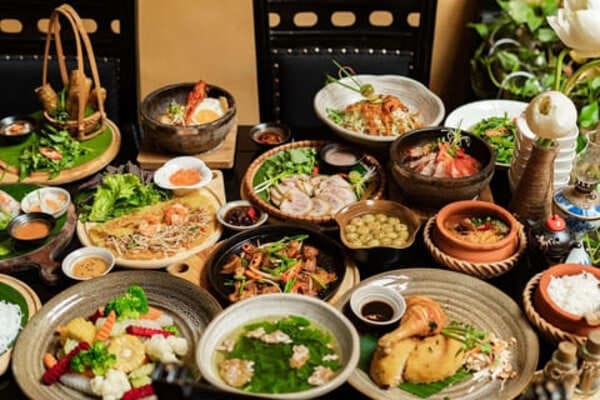
Sweet, salty, sour, and umami notes are expertly balanced in Vietnamese cuisine, creating a layered and harmonious taste experience. Ginger, lemongrass, garlic, and chilies are essential aromatics, infusing dishes with fragrant depth and complexity.
This fish sauce-based dipping sauce with lime juice, sugar, and chilies is a ubiquitous condiment, adding a zingy finish to many dishes. From the spicy flavors of Central Vietnam to the sweeter nuances of the South, each region boasts its own specialties and signature dishes.
- Vietnamese Pho
- Vietnamese Bun cha
- Vietnamese Banh mi
- Vietnamese Goi cuon
- Bun bo hue
- Vietnamese Banh xeo
- And many other dishes….
Vietnamese traditional festivals
Vietnam’s vibrant calendar explodes with traditional festivals, each a unique tapestry of customs, ceremonies, and jubilant celebrations.
- Tet Nguyen Dan (Lunar New Year)
- Mid-Autumn Festival
- Hung Kings’ Temple Festival
- Perfume Pagoda Festival
- Giong Festival
- Hue Festival
- Yen Tu Festival
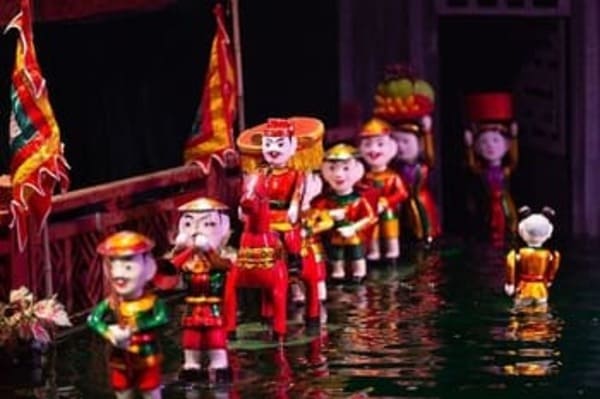
Participating in festivals is a wonderful way to experience Vietnamese culture firsthand, immerse yourself in the joyous atmosphere, and connect with the local community. Dress modestly and behave respectfully towards local traditions and religious customs. Check festival dates and book travel arrangements in advance, as some celebrations attract large crowds.
Ancestor worship
Ancestor worship is a cornerstone of Vietnamese culture, weaving family ties, spiritual beliefs, and cultural practices into a beautiful tapestry. Respect for elders and ancestors is a deeply ingrained value in Vietnamese society. Ancestor worship is an expression of this respect and gratitude. Ancestors are seen as guardians and guides, watching over their descendants and influencing their lives. Worshipping them ensures the family’s continued prosperity and well-being.
Actions in this life impact one’s fate in the afterlife. By performing rituals and making offerings, descendants can accumulate merit for their ancestors and improve their lives in the spirit world. Every Vietnamese household typically has an altar dedicated to deceased ancestors. It might be a simple space or an elaborate shrine, adorned with photos, offerings like food, incense, and paper money.
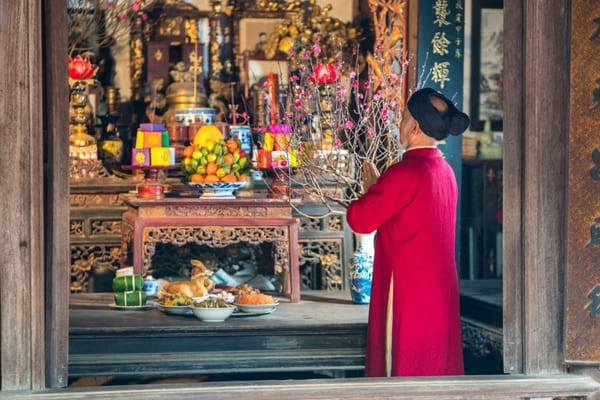
Vietnamese traditional costumes
The “áo dài” is the iconic Vietnamese national dress, a long, flowing tunic worn by both men and women. Symbolizing elegance and grace, it comes in various styles, from the simple and practical to the richly embroidered and embellished. ypically made of silk or other flowing fabrics, women’s áo dài feature high necklines, long sleeves, and side slits, often reaching the ankles. Colors, patterns, and embellishments vary depending on the occasion and personal preference.
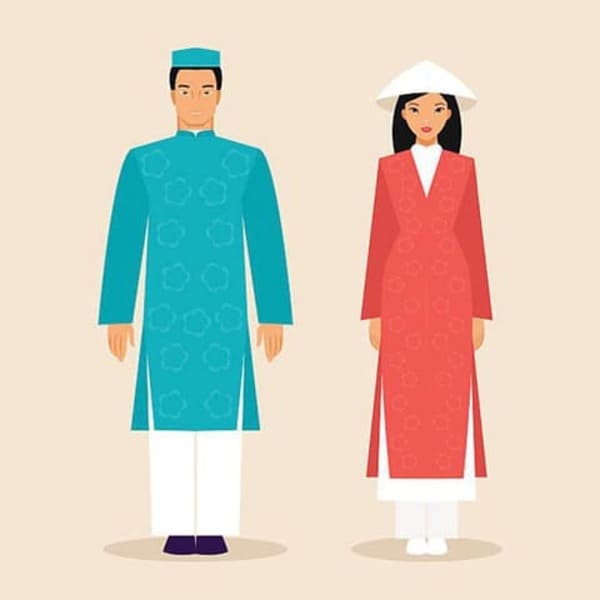
Vietnamese traditional art
Vietnam’s traditional art scene is a kaleidoscope of colors, textures, and techniques, steeped in history and infused with cultural symbolism. From delicate silk paintings to intricate lacquerware, each art form unveils a unique dimension of the Vietnamese soul.
- Calligraphy
- Silk painting
- Water Puppet
- Theater: Tuong, Cheo, Cai Luong

Religion and philosophy
Mahayana Buddhism: The dominant religion, emphasizing compassion, self-improvement, and enlightenment. Its peaceful temples and pagodas offer spaces for prayer and meditation.
Cao Dai: A unique monotheistic religion blending elements of Buddhism, Confucianism, Taoism, and Christianity. Its magnificent temples with colorful mosaics and eclectic architecture are worth a visit.
Christianity: Primarily Catholicism, with roots in the French colonial period. Christian churches and communities add another layer of diversity to the religious landscape.
Hoa Haoism: A Buddhist offshoot emphasizing social justice and self-reliance, particularly popular in the Mekong Delta.
Animism, ancestor worship, Confucianism, and Taoism are indigenous religions in Vietnam
Traditional martial arts
There are over a hundred different styles of traditional martial arts in Vietnam, each with its own unique history, techniques, and philosophy. Some of the most well-known styles include:

- Bình Định Gia: This style from central Vietnam emphasizes powerful hand strikes and kicks, often involving knees and elbows.
Known for its focus on self-defense and practicality. - Vovinam: Founded in the 20th century, Vovinam combines elements from various Vietnamese styles and other martial arts like boxing and grappling.
Known for its diversity and adaptability.
Traditional kinship
Families trace their lineage through the father’s side, with children belonging to his family’s clan. Living arrangements often include grandparents, parents, children, and sometimes aunts, uncles, and cousins under one roof. This fosters multi-generational bonds and support systems.
Respect for elders is paramount. Younger generations address older ones with specific titles and show deference.
Literature and folk culture
Vietnamese literature boasts a fascinating lineage, where oral storytelling thrived alongside written works. Epic poems, folktales, and legends passed down through generations laid the foundation for written literature.
Storytelling, singing, and music play a central role in Vietnamese folk culture. Folktales like “Tam and Cam” and “Thánh Gióng” teach valuable lessons and preserve cultural heritage.
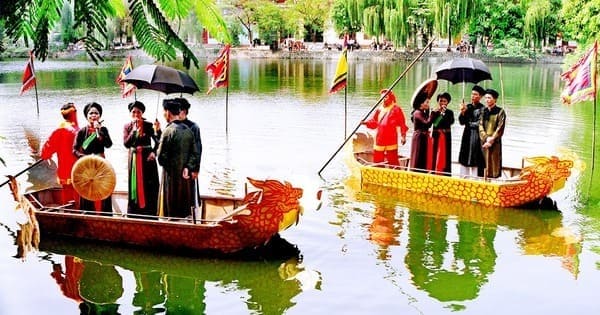
Traditional Vietnamese architecture
Vietnamese architecture seeks to blend seamlessly with the surrounding environment. Houses are often built on stilts to avoid floods and utilize natural ventilation. Open layouts connect with gardens and courtyards, bringing the outdoors in. Bamboo, wood, and clay are commonly used for their abundance and eco-friendliness. These materials also offer flexibility and adaptation to the local climate.
Traditional houses are designed for both living and working. Spaces are often multi-functional, with specific areas for cooking, dining, sleeping, and ancestral veneration. Intricate wood carvings, colorful lacquerware, and vibrant floor tiles add aesthetic flourish to houses. Patterns often feature flowers, animals, and mythological symbols, each carrying meanings and blessings.
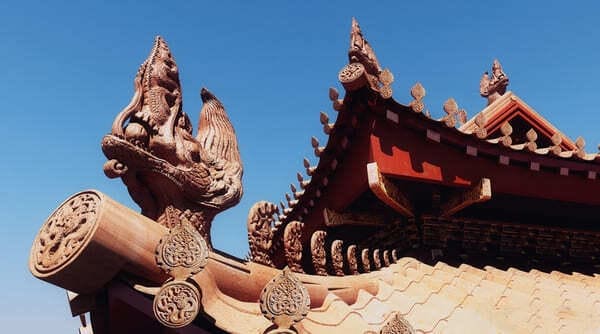
Vietnamese traditional handicrafts
- Silk Weaving: From the shimmering ao dai to intricate tapestries, Vietnam’s silk weaving tradition is renowned. Techniques like brocade and embroidery add depth and texture, showcasing floral motifs, geometric patterns, and mythological symbols.
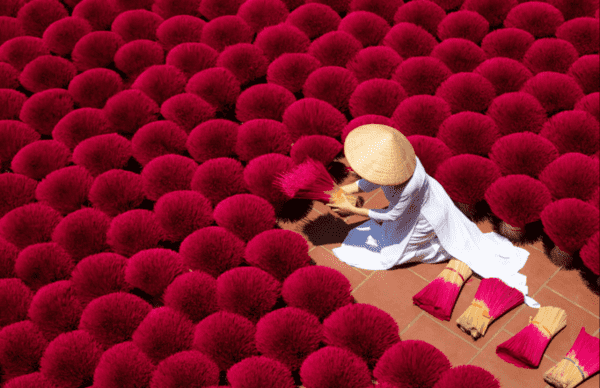
- Lacquerware: This centuries-old art form involves layering and polishing sap from the rhus tree, creating stunningly intricate designs on bowls, furniture, and miniature masterpieces. Vibrant colors and delicate patterns make Vietnamese lacquerware truly captivating.
- Ceramic Art: Bat Trang near Hanoi is famed for its delicate porcelain, while Bien Hoa in the south crafts earthy stoneware. Each region offers unique glazes, textures, and motifs, from lotus blossoms to dragon scales.
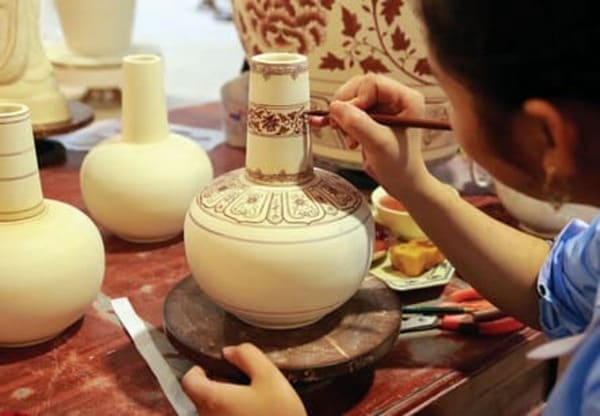
- Woodcarving: From intricate temple doors to elegant furniture, Vietnamese woodcarving showcases impressive craftsmanship. Animals, mythical creatures, and floral motifs adorn these artworks, each stroke breathing life into the wood.
Above is all the information Balala provides to you, hope you receive useful information. Come to Vietnam to clearly feel the traditional culture that cannot be found anywhere else.




Tin Tức mới nhất
[5 minutes] Learn about all the handicrafts in Vietnam
Handicrafts in Vietnam are famous for their beauty, quality and tradition. It’s a great way...
5 useful information about Vietnam water puppets
Vietnamese water puppetry is a fascinating art form with a rich history and unique appeal....
16 traditional festival in vietnam [Overview]
Do you know traditional festival in Vietnam? If you don’t know or lack information, please...
5 National Costume Vietnamese [can not be ignored]
Vietnamese national costumes are very diverse and rich, with materials, styles and costume patterns that...
Traditional culture in Vietnamese [10 minutes to know it all]
Traditional culture in Vietnamese is a diverse picture , rich history, and a deep connection...
Customs and traditions of Vietnam [6 important notes]
What are the special customs and traditions of Vietnam? This is a country with more...